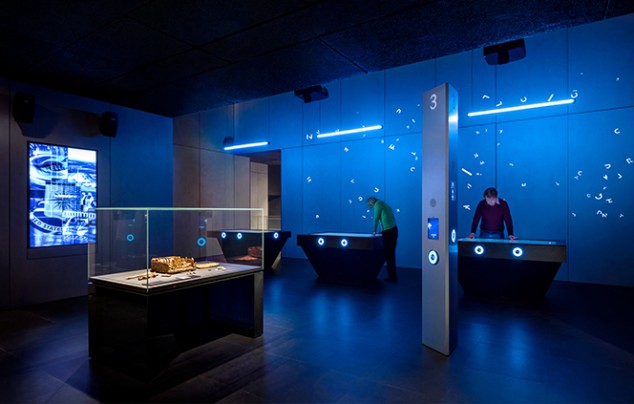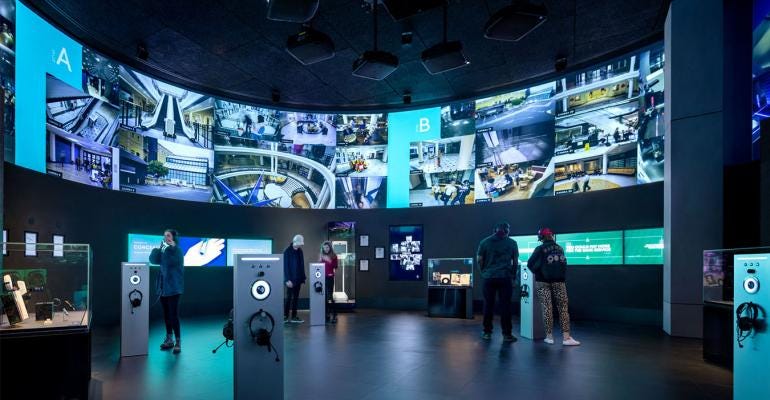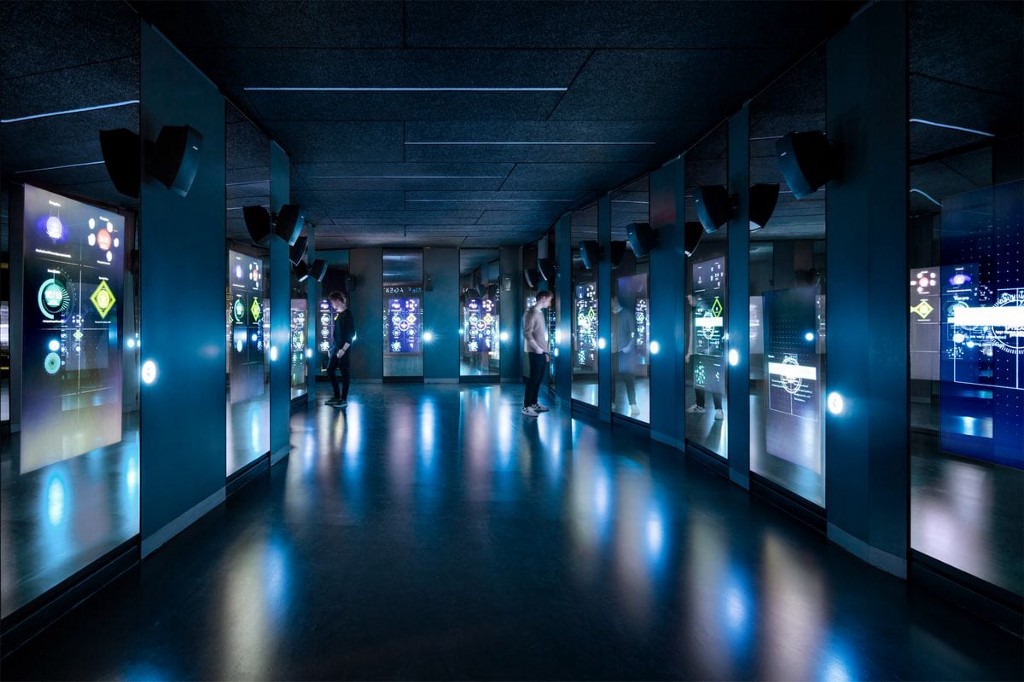
Working at a Digitally-Oriented Museum
May 2, 2019 - All
Emily Banks works at New York’s interactive, espionage museum, SPYSCAPE. It is an institution that is completely rooted in the technology world. The technology that makes up SPYSCAPE is ingrained in the galleries and makes it very different than a typical museum. I chose Banks to interview due to the fact that she works a typical museum job in an atypical museum environment. With how technology-oriented the museum is, it can affect how much technology is incorporated into typical museum job positions and how they work with other staff, clients, and patrons.

● Who are you and what do you do?
My name is Emily Banks and I am the Group Sales Coordinator at SPYSCAPE.
● What are your typical days like?
My typical day at SPYSCAPE involves tending to inbound inquiries through email and phone about the museum, generating invoices and reports, and communicating with corporate groups, school groups, and travel groups about attending SPYSCAPE.
● How does digital strategy affect your job?
The vast majority of what I do involves a lot of digital strategy. Since everything that we do in our personal lives seems to be so technology heavy, it is important that we also use this to our advantage and enhance our connection via social media.
● What are the objectives of digital strategy in the museum?
The objective of our digital strategy is to gain someone’s attention. We are so glued to our phones and it seems that everything can be accessed and discarded so quickly. It is our job to hold someone’s attention for more than 30 seconds.
● What is the structure of your digital aspects?
The structure of the digital department and the role it plays relies on all aspects — month, day, time. Like I said in the last question, we are fighting for people’s attention, and it is important to know when people are the most active on these digital platforms.
● What are the main opportunities you see in the upcoming technologies?
The main opportunities I see in upcoming strategies is more outreach. The increasing development in technology is limitless and who knows what tools we will have access to next?
● How do you measure the success of your strategy?
Numbers. The more platforms that we have out with our product, the more reach we will get.

● Who are your target audiences?
This varied within the first few months at SPYSCAPE. We originally thought our target audience would be geared towards adults. However, this seemed to change and now we are the most popular amongst children from as young as 7, to people who are as old as 80.
● What are the main challenges the museum is currently facing?
It all comes back to fighting for people’s attention. Our product is great, but what stands in the way of someone going to a Broadway show instead of our museum?
● How would you rate the digital maturity in your organization?
I would say a child as young as 7 can be able to fully grasp the concept and the history of our museum.
● How do you see the future of usage of emerging technologies during the museum visit?
Since SPYSCAPE is so technologically based, I can only see a greater success in the future of this museum.
●Could you talk a little about the organization of SPYSCAPE, particularly how the digital department is in London and such?
The organization developed and evolved in London. The digital department’s main strategical factors include analyzing commercial expectations and establishing partnerships.
●What kinds of challenges does the organization face because of the division between two cities?
Honestly, the time difference. Communication would be so much easier and faster if there was not a 5 hour gap in between work days.
●In terms of digital maturity, what more could SPYSCAPE do to grow in the digital world? Are there improvements the institution could make to their digital concepts in the future?
SPYSCAPE could expand on its way to interact with its visitors beyond SPYSCAPE’s doors. Developing a SPYSCAPE app with digital challenges and games could definitely work for the benefit of the company.
● Since SPYSCAPE is such a digitally-oriented museum, what kinds of challenges do you think it faces that differ from other museums?
I think it is all in the eyes of SPYSCAPE’s visitors. Some visitors gravitate towards traditional museum aspects and do not necessarily enjoy the interactive portions of the museum. Other visitors may think the opposite. It is in terms of perspective.
● What are some of the most satisfying pieces of your job?
The end result of making the visitors future visit as easy as possible.
Banks’ interview shed light for me on what it is like to work in a new, technology-oriented museum. While many of the goals are the same as typical museums, like wanting to grasp visitor’s attention, the execution is different since technology is so deeply rooted into the museum space and it’s technology fighting technology for the attention. It was also an interesting point that SPYSCAPE does not have an app or as much of an online presence (that accesses viewers when not at the museum or looking at attending) as one would think for such a technology-oriented place; it needs concepts like these, just like other museums. The interview was a fascinating exchange into the translation of a Groups Sales job into a museum that has technology in every piece of the museum experience, and despite the technology, there are still areas of improvement to create an even more engaging experience.

Working at a Digitally-Oriented Museum was originally published in Museums and Digital Culture – Pratt Institute on Medium, where people are continuing the conversation by highlighting and responding to this story.